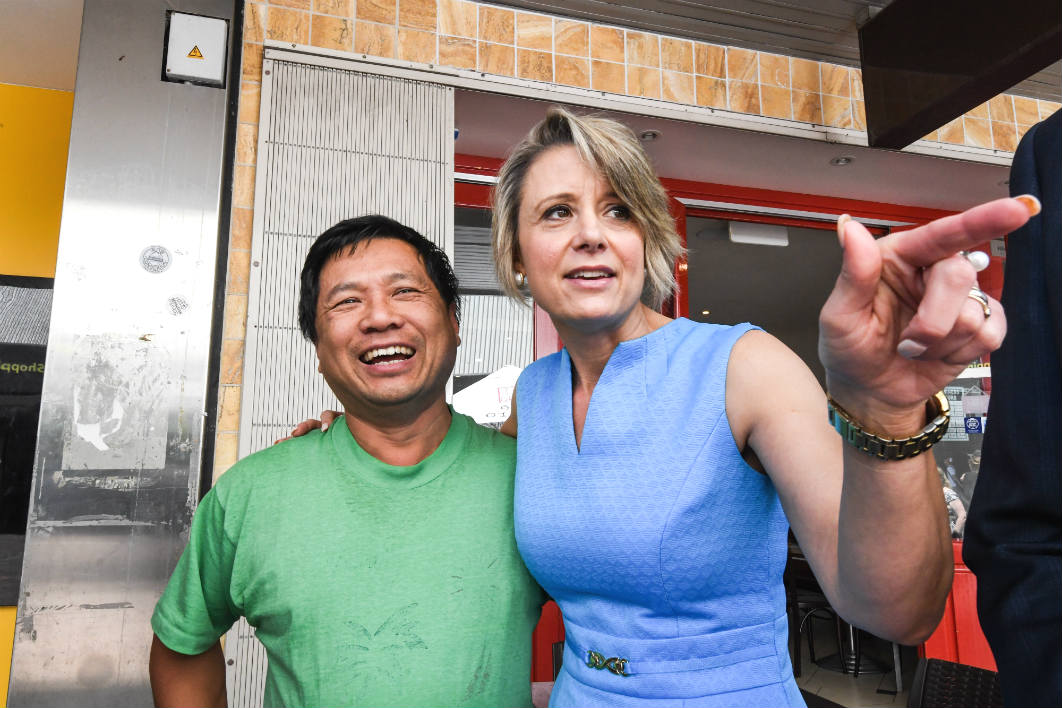The results of the same-sex marriage plebi-survey are in, and it’s a big 61.6 per cent in favour to 38.4 against. Turnout was 79.5 per cent of a large electoral roll — in fact, probably the most comprehensive roll ever used in a national vote. Some 133 (out of 150) House of Representatives electorates, and every state and territory, recorded Yes majorities. Melbourne topped the chart with 83.7 per cent and Paul Keating’s old seat of Blaxland recorded the lowest, with 26.1 per cent.
It was a campaign like no other, with no beginning, middle and end, at least as we usually experience them. By the time the Yes and No teams were shifting into second gear, it turned out most people had “voted.”
That 79.5 per cent turnout is higher than was roundly expected, and one explanation is that — hot on the heels of last year’s Census, and with voting generally compulsory — many recipients assumed that returning the forms was mandatory.
If we’re lucky, the Australian Bureau of Statistics will release results down to SA1 statistical units (of which there are some 58,000 across the country) which, combined with Census data, would provide a treasure trove for demographic analysis. In the meantime, we have data according to federal electoral district. This table shows those districts in order of Yes vote, colour-coded by state, and one of the standouts is the proportion of Labor-held seats that voted No. The bottom of the table is predominantly a who’s who of migrant-heavy western and southwestern Sydney electorates. Pollbludger has developed a useful tool for anyone who wants to check the major permutations.
Interestingly, the electorate most commonly obsessed over by the political class — outer-suburban Lindsay, one of the “whitest” in Sydney — recorded a comfortable 56.2 per cent Yes majority.
Opinion polls suggested that opponents of same-sex marriage were less likely to participate than supporters, which means that a compulsory ABS survey would probably have produced a smaller Yes vote, though still a majority. An actual ballot-box election, as was originally envisaged, would have given people weeks and weeks to think and overthink, with the outcome correspondingly less predictable.
Perhaps we need a conversation about the anti-progressive effect of compulsory voting, which sees the “not sures” end up voting no. And this applies not just to referendums but also to general elections.
Our next closely watched vote will be the by-election in Bennelong on 16 December, and unlike New England (where Barnaby Joyce is all but assured of victory) this will be at least contestable.
By-elections usually arise from resignation or death. Unless the former incumbent was only elected at the previous poll, his or her personal vote evaporates. In the case of a resignation, voters often direct resentment at that former MP’s party.
For these reasons and more, by-elections usually produce swings against governments. But the statistics are skewed by the fact that oppositions more often run in safe government-held seats than the other way around. On top of all that, with nothing of great importance — such as who will form government — at stake, electors generally feel able to vote from other motivations. Most often, the motivation will be to inflict pain on an arrogant government.
At time of writing, Liberal John Alexander is recontesting Bennelong. The last time an incumbent ran in this kind of by-election was in Lindsay in October 1996, after the Court of Disputed Returns found that newly elected Liberal Jackie Kelly had been ineligible to stand at the March election. The Howard government, barely six months old, was still riding high, Kelly enjoyed a sophomore surge, many Lindsay voters were cranky with Labor for pushing the issue that led to the by-election, and the upshot was a 5 per cent swing to the Liberals.
Eighteen years later, John Alexander is a popular MP, as his 10 per cent margin attests. To get an idea of how he has built a personal vote: he first became MP in 2010 with a 53.1 per cent two-party-preferred vote compared with NSW-wide Coalition support of 51.1 per cent, a gap of 2 per cent. Two elections later, in 2016, his vote was 59.7 versus state-wide Coalition support of 50.5, a 9 per cent gap.
Nevertheless, Labor’s recruitment of former NSW premier Kristina Keneally makes this a contest. Forget about her leading the NSW Labor Party to its worst election result ever in 2011: no helmsperson could have prevented that. Barely fifteen months in the premiership, she was not, unlike her party, widely loathed.
Yes, Eddie Obeid’s name will be brought up again and again over the coming weeks. Keneally is of the NSW Right, which generally indicates a linear, reductionist view of political strategy, and that seems reflected in her thinking. (In 2011, after losing office, she urged the Gillard government to announce that it had changed its mind again and would not, after all, be bringing in the “carbon tax” — about as diabolical a piece of political advice as can be imagined.)
Her presentation alongside Bill Shorten on Tuesday, while fine in content (this isn’t about John Alexander, it’s about the Turnbull government), came across as so much politics-speak, and not terribly sincere. And her explanation on Channel 10’s The Project for suddenly deleting her tweets was risible.
The Liberals will energetically dish dirt over the coming month. But Keneally obviously enjoys recognition and is, when she’s not reading a script, an appealing, talented communicator.
And this is not your run-of-the-mill by-election, because the future of the government may actually be in play. Just how that dynamic plays out is impossible to say. ●





